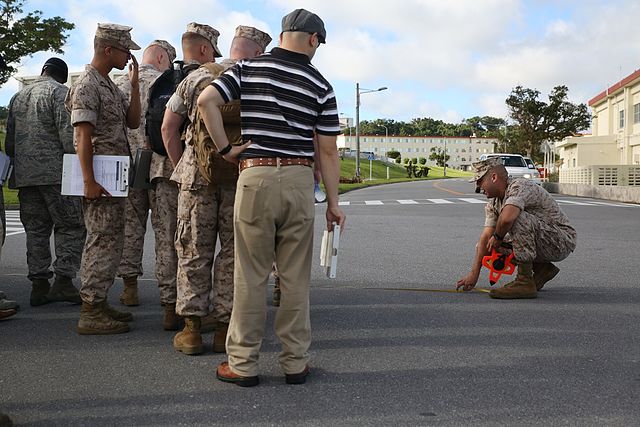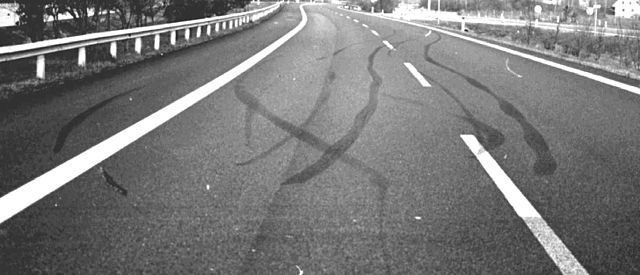Assured clear distance ahead
In legal terminology, the assured clear distance ahead (ACDA) is the distance ahead of any terrestrial locomotive device such as a land vehicle, typically an automobile, or watercraft, within which they should be able to bring the device to a halt. It is one of the most fundamental principles governing ordinary care and the duty of care for all methods of conveyance, and is frequently used to determine if a driver is in proper control and is a nearly universally implicit consideration in vehicular accident liability. The rule is a precautionary trivial burden required to avert the great probable gravity of precious life loss and momentous damage. Satisfying the ACDA rule is necessary but not sufficient to comply with the more generalized basic speed law, and accordingly, it may be used as both a layman's criterion and judicial test for courts to use in determining if a particular speed is negligent, but not to prove it is safe. As a spatial standard of care, it also serves as required explicit and fair notice of prohibited conduct so unsafe speed laws are not void for vagueness. The concept has transcended into accident reconstruction and engineering.

Distance seen with ECE light by night
Traffic collision reconstruction
Traffic collision reconstruction is the process of investigating, analyzing, and drawing conclusions about the causes and events during a vehicle collision. Reconstructionists conduct collision analysis and reconstruction to identify the cause of a collision and contributing factors including the role of the driver(s), vehicle(s), roadway and general environment. Physics and engineering principles are the basis for these analyses and may involve the use of software for calculations and simulations. Collision reconstruction is sometimes used as the basis of expert witness testimony at trials. Collision reconstructions are performed in cases involving fatalities or personal injury. Results from collision reconstructions are also sometimes used for making roads and highways safer, as well as improving safety aspects of motor vehicle designs. Reconstructions are typically conducted by forensic engineers, specialized units in law enforcement agencies, or private consultants.

Roadside investigative training exercise
Skid marks on an asphalt road.
Toronto Police CRU vehicles at the scene of a large accident in North York in 2014




